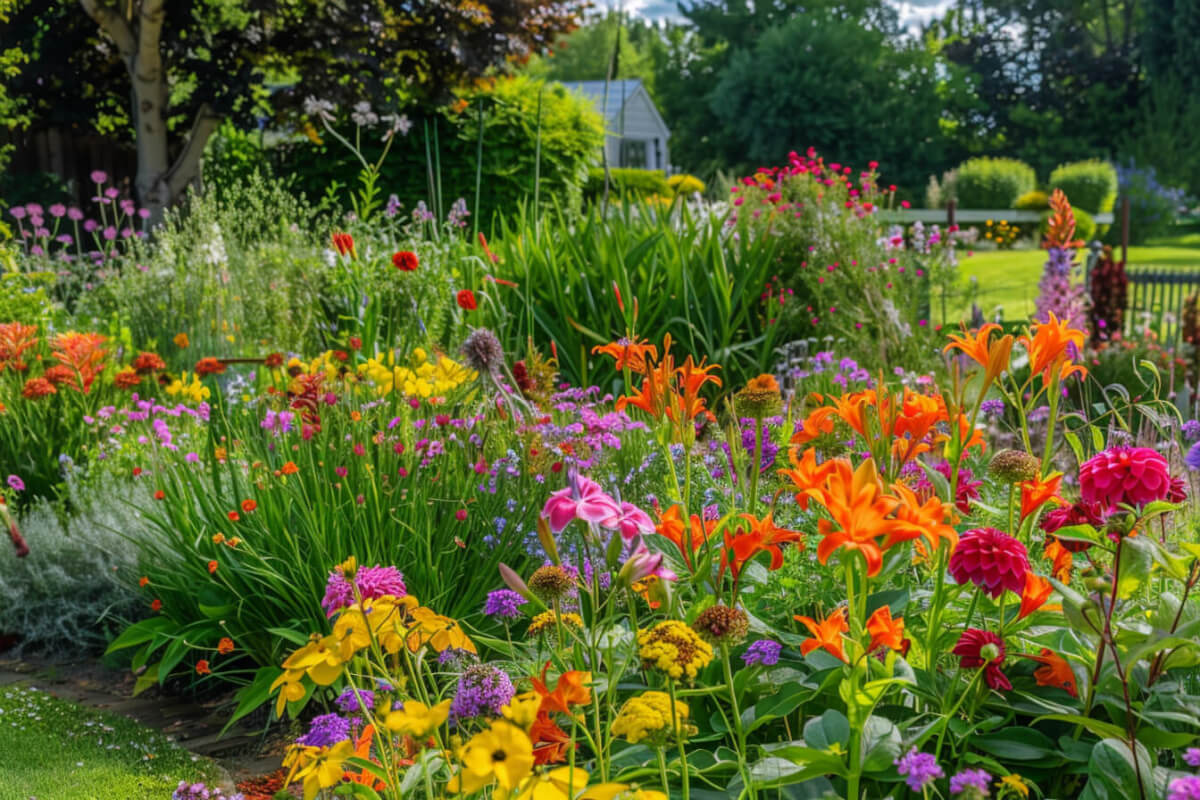
Nothing compares to the fragrance and beauty of sweet peas. But many people think that they are hard to grow in North Texas.
Keep reading to learn the techniques used by generations of North Texas gardeners to grow bountiful bouquets of sweet peas every spring.
What are Sweet Peas?
Sweet peas (Lathyrus ordoratus) are a member of the legume family and native to Sicily. Cross-breeding of sweet peas began in the 19th century and turned the sweet pea into a Victorian garden sensation, cementing their legacy as a much beloved addition to the cottage cutting garden.
Most sweet peas are grown as annual flowers, but perennial varieties can flourish in certain climates. Sweet peas will also behave like a perennial if you let them go to seed and don’t disturb the area.

Types of Sweet Peas
There are many different types of sweet peas. They differ in day-length required to bloom, stem length, fragrance, and bloom size. Here are a few of the most popular types:
Spencer
- Large flowers
- Sturdy, long stems
- Ideal for bouquets and table-top arrangements
- Bloom over a longer period
- Example of Spencer-type: Beaujolais
Elegance
- Day-length neutral
- Reliably bloom several weeks earlier than any other sweet pea
- Large, ruffled bloom
- Vigorous long stems
Royal
- Later to bloom
- Strong, vigorous growth habit
- Long stems
- Most commonly grown sweet pea for the cut flower market
Dwarfs
- Grow between 6 and 12 inches
- Suited for pots, hanging baskets, and border plantings
- Short stems are not suitable for cutting
When should you plant sweet peas in North Texas?
In cold climates, sweet peas are sown in early spring. But here in North Texas, sweet peas perform best when planted in October and November. This fall planting window is ideal because sweet peas need at least 50 days of temperatures below 60 degrees.
Longtime Dallas Morning News columnist Mariana Greene wrote that a friend always planted sweet peas the day after Thanksgiving and grew so many sweet peas that she had to give bouquets away to friends and neighbors. This post-holiday planting date is easy to remember, but Dallas gardeners can be just as successful planting sweet peas a month earlier in October.
Where to plant sweet peas
For best performance, plant sweet peas in a location that gets direct sun for the majority of the day. Too much shade will result in fewer blooms.
Before planting, amend the location with plenty of compost. If soil is heavy or drains poorly, incorporate expanded shale to help break up compacted soil.
Supporting sweet pea vines
Sweet pea plants produce vigorous vines, and they need a tall structure to grow on.
Commercial growers support sweet peas with netting strung between tall, sturdy stakes. Netting works well in the home garden as well, but if you’re looking for something more aesthetically pleasing you can try teepee trellises wrapped in twine, wrought iron archways, or constructing a wire trellis on a fence.
Whatever support you choose, make sure it’s tall enough. Sweet peas often don’t start blooming until they are at least five feet tall.

How to plant sweet peas
- Plant sweet pea seeds 1 inch deep and 2 to 3 inches apart. When seedlings are 2 inches tall, thin them 4 to 5 inches apart, to allow plants room to mature.
- If your sweet peas fail to germinate 10-21 days after planting, sow another round of seeds. Better safe than sorry.
- Unless your soil is particularly poor, sweet peas won’t need additional
fertilizer beyond the pre-planting addition of compost, but they do like to stay evenly moist during the growing season. - In North Texas, sweet peas start blooming heavily in early May. Harvest sweet pea blossoms frequently. The more you cut, the more they bloom.
Should you soak or nick sweet peas before planting?
Sweet pea experts say that soaking sweet peas before planting doesn’t do much to speed up the germination process. However, you can try “nicking” the sweet pea seed coat before planting. This can be done with nail clippers. Use one corner of the clippers to scratch the seed coat. (Avoid taking a big chunk out of the seed.)
I never nick or soak my sweet peas and they germinate without a problem.
Buying sweet pea seeds
Sweet pea seeds are available at quality, independent garden centers like Nicholson-Hardie, North Haven Gardens, Jackson’s, Redenta’s, Ruibal’s, and Walton’s.
My favorite online suppliers for sweet peas are Botanical Interests, Renee’s Garden, and Johnny’s.

- Can Eating Tomatoes Help Prevent Weight Gain? New Study Says Yes - May 25, 2025
- New to Gardening? Join Our Step-by-Step Beginner Gardening Class - April 24, 2025
- Why “Intensive” Gardening is Not Good - March 9, 2025



